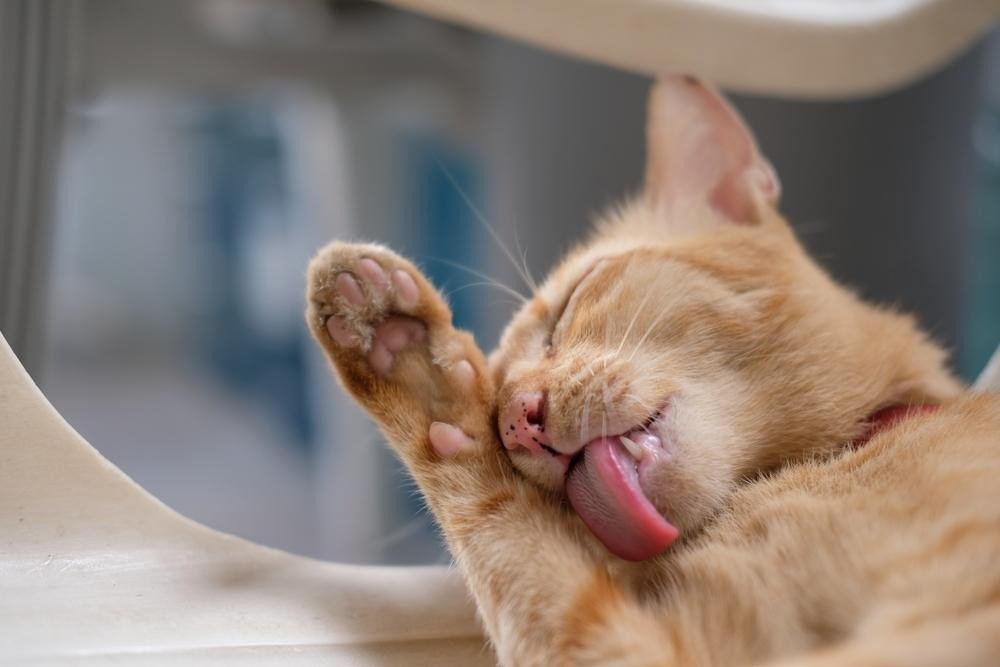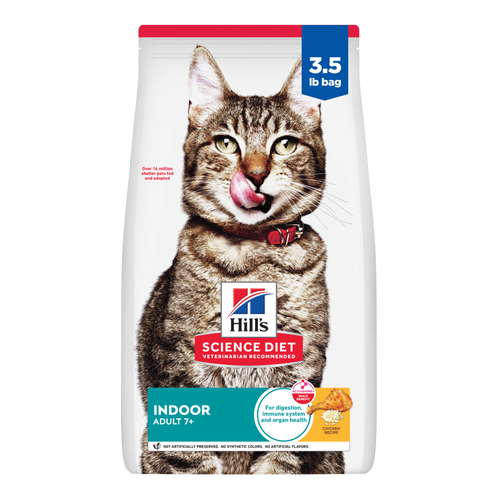

If your cat has been scratching more than usual, licking themselves excessively, or suddenly smells a little off, there might be something wrong. Cats are masters at hiding their discomfort, but when something's wrong with their skin, it can be harder to hide from loving pet parents. From abrupt abscesses to fungal issues like ringworm, skin infections in cats are more common than you might think — and catching them early can make all the difference.
What Are Skin Infections in Cats?
Just like people, cats normally have low levels of symbiotic bacteria and fungi that live on the surface of the skin. These symbiotic microorganisms are mostly harmless when a healthy balance exists, and they support skin health in a variety of ways. They help maintain the skin's natural barrier, crowd out potentially harmful microbes and even play a role in regulating inflammation. In a healthy cat, this balanced skin microbiome contributes to a soft coat, minimal itching and resilience against external irritants or infections.
But when something either overwhelms the skin's natural defenses or impairs a cat's immunity and ability to ward off foreign invaders, normally harmless microorganisms can overgrow and a skin infection can occur.
Skin infections can also occur if cats come into contact with disease-causing organisms or skin parasites, such as ringworm, fleas or mites.
Cat Skin Infection Symptoms
A cat with healthy skin and fur should have a full coat that is shiny, sleek and clean. When there are changes to this, there's typically a reason. Skin changes include:
- Hair loss, balding
- Red skin
- Open sores or scratches
- Crusty bumps all over the skin
- Pimples or red bumps
- Peeling skin
- Oozing skin
- Skin odor
- Thickened or hyperpigmented skin
- Excessive shedding
- Greasy, unkempt fur
- Flea dirt
- Increased ear discharge associated with odor and scratching or head shaking
Skin infections can also cause behavioral changes. These include:
- Excessive chewing, scratching or rubbing
- Hiding or increased aggression/irritation
- Loss of appetite
- Decreased grooming
Several of these cat skin infection symptoms can be associated with other medical conditions in cats, so if you notice them, it's best to consult with a veterinarian as soon as possible.

Types of Feline Skin Infections
Recognizing the different types of infections is key to getting the right treatment and keeping your cat comfortable. Feline skin infections can be divided into broad categories: bacterial infections, fungal infections and infections associated with allergies or parasites.
Bacterial Infections
Bacterial skin infections in cats occur when harmful bacteria cross the skin barrier, causing an inflammatory response to try and get rid of the invader. There are several types of bacterial infections, and they are usually secondary to one of two causes:
- Damage to the skin barrier (from causes such as excessive scratching, wounds, bites, skin fold rubbing, immune-mediated disease or parasites)
- Impaired immunity (which can occur in cats with primary immune system issues or secondary to a number of other diseases)
Signs that are specific to bacterial skin infections include crusty bumps, pimples and raised red bumps.
Fungal infections
Fungal skin infections occur when a harmful fungus begins to grow on the skin, disrupting normal function and affecting the skin, hair and nails. They can be contagious and are more often seen in younger cats. Some of the most common skin infections in cats are ringworm and Malassezia dermatitis, which is an overgrowth of normal skin flora.
The following signs are typically associated with fungal skin infections in cats:
- Patchy hair loss, especially in young or shelter cats
- Scaly, crusty or bald spots with minimal itching
- Skin problems that don't improve with antibiotics
Allergy infections
While skin allergies are not a skin infection, allergies cause itching, scratching and inflammation that damage the skin barrier. Itchy, inflamed skin with a weakened skin barrier allows normal bacteria and fungi to overgrow, causing secondary skin infections. Cats with any type of skin allergy are at increased risk of developing secondary skin infections.
Skin Parasites
Skin parasites bite, chew and burrow into the skin, weakening the integrity of the skin barrier and causing cats to bite and chew themselves, which further damages the skin. Fleas, ticks, lice and mites can all cause a secondary skin infection.

How Skin Infections Are Diagnosed
If you think your cat may have a skin infection, your first step should be to take them to the vet. During your cat's appointment, your vet will take an oral history and perform a physical exam and lab tests to diagnose the skin condition. While the type of tests performed will depend on the specific signs your cat is showing, the most common lab tests vets use to diagnose a skin infection include:
- Skin scraping or other microscopic examination of the skin
- Wood's lamp (fungal infection)
- Fungal culture
Depending on what your vet suspects as the underlying cause, your vet may order additional testing, which can include a bacterial culture, skin biopsy, or blood or urine testing.
Treatment of Skin Infection in Cats
Treatment will vary depending on the type of skin infection, but ultimately, the goal is to eradicate the infection and treat the underlying cause.
Bacterial infections may be treated with oral or topical antibiotics, and fungal infections may be treated with oral or topical antifungals. If your cat has a contagious infection, then your vet will advise you on how to keep the infection from spreading to other pets or people in the home. Whatever is prescribed for your cat, for best results, make sure to finish all medications as prescribed and return to your vet as directed to check in on the condition.
If there is an underlying cause, then that will need to be treated, as well; otherwise, the skin infection will likely recur. Your vet will be your best resource on how to treat your cat's current infection and prevent further infections from recurring.
Recovery and Management of Skin Infections in Cats
While you cannot prevent all possibilities of skin infections in your cat, there are several things you can do to reduce the likelihood that they develop skin problems:
- Keep your cat indoors to minimize the risk of infectious disease.
- Keep your cat on appropriate external parasite control, as recommended by your vet.
- Have your cat seen by a vet at least annually to catch any problems early.
- If you notice any signs associated with skin disease, then schedule a veterinary appointment as soon as possible.
- Feed your cat an appropriate amount of a high-quality, complete and balanced cat food.
Your Cat's Comfort Starts with Awareness
Skin infections can make life uncomfortable for your cat — but with the right care, they're typically treatable. By recognizing early signs, understanding the different types of infections, and working closely with your vet, you can help your cat heal and prevent future flare-ups. Whether it's adjusting grooming habits or simply being aware of changes in their behavior, your attention plays an essential role in keeping your furry friend healthy and happy.




















